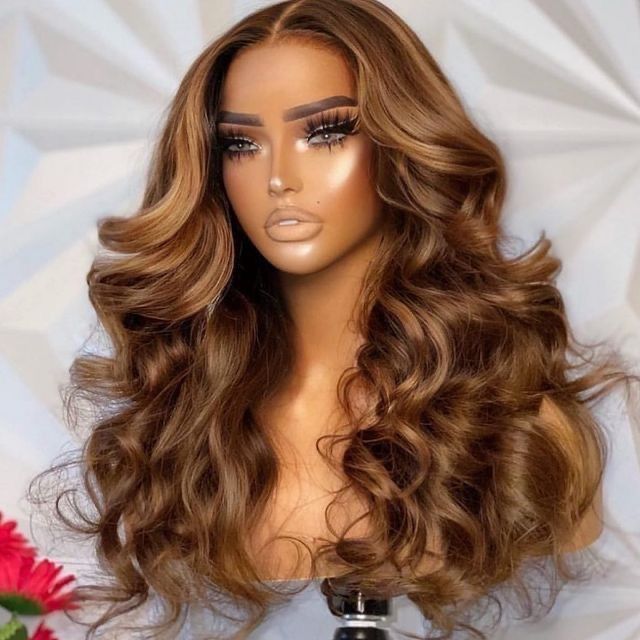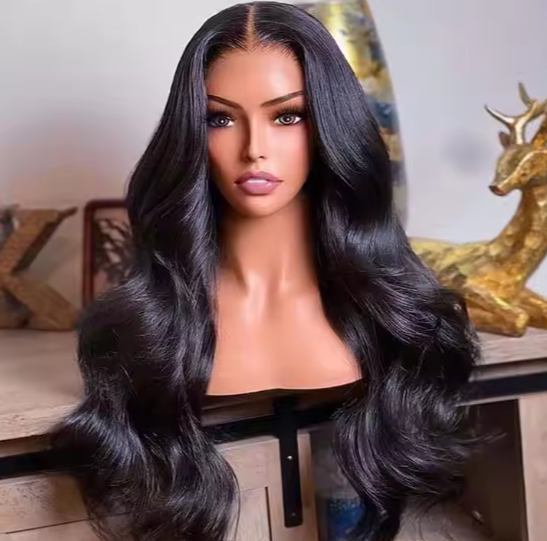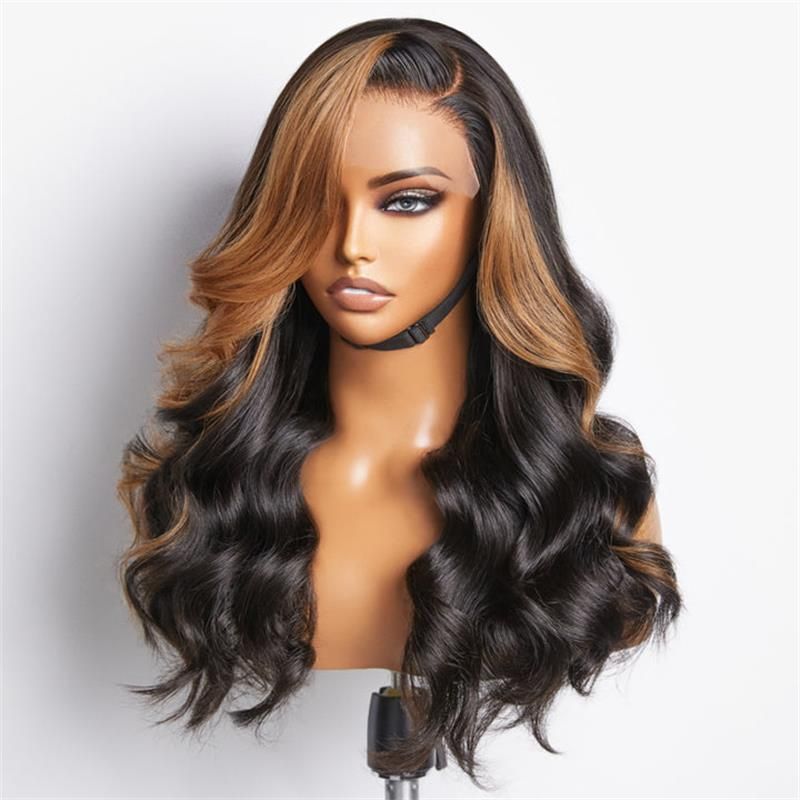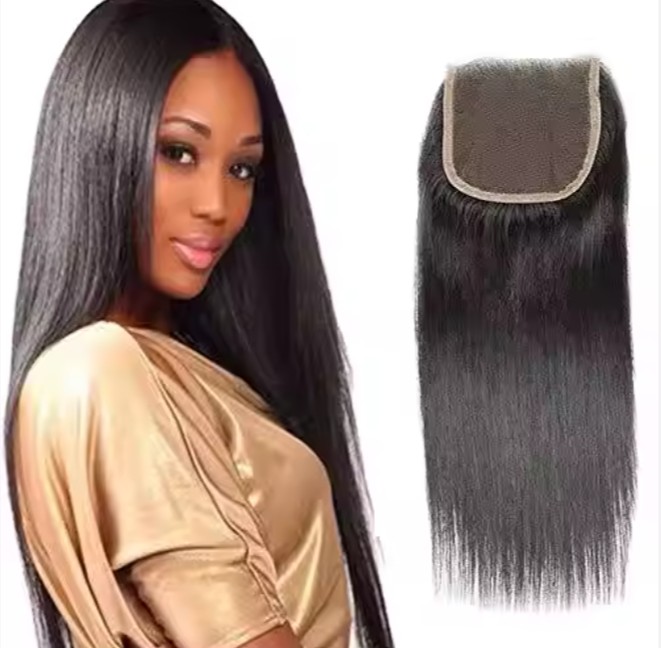Short Bob Wig Production: What B2B Buyers Need to Know
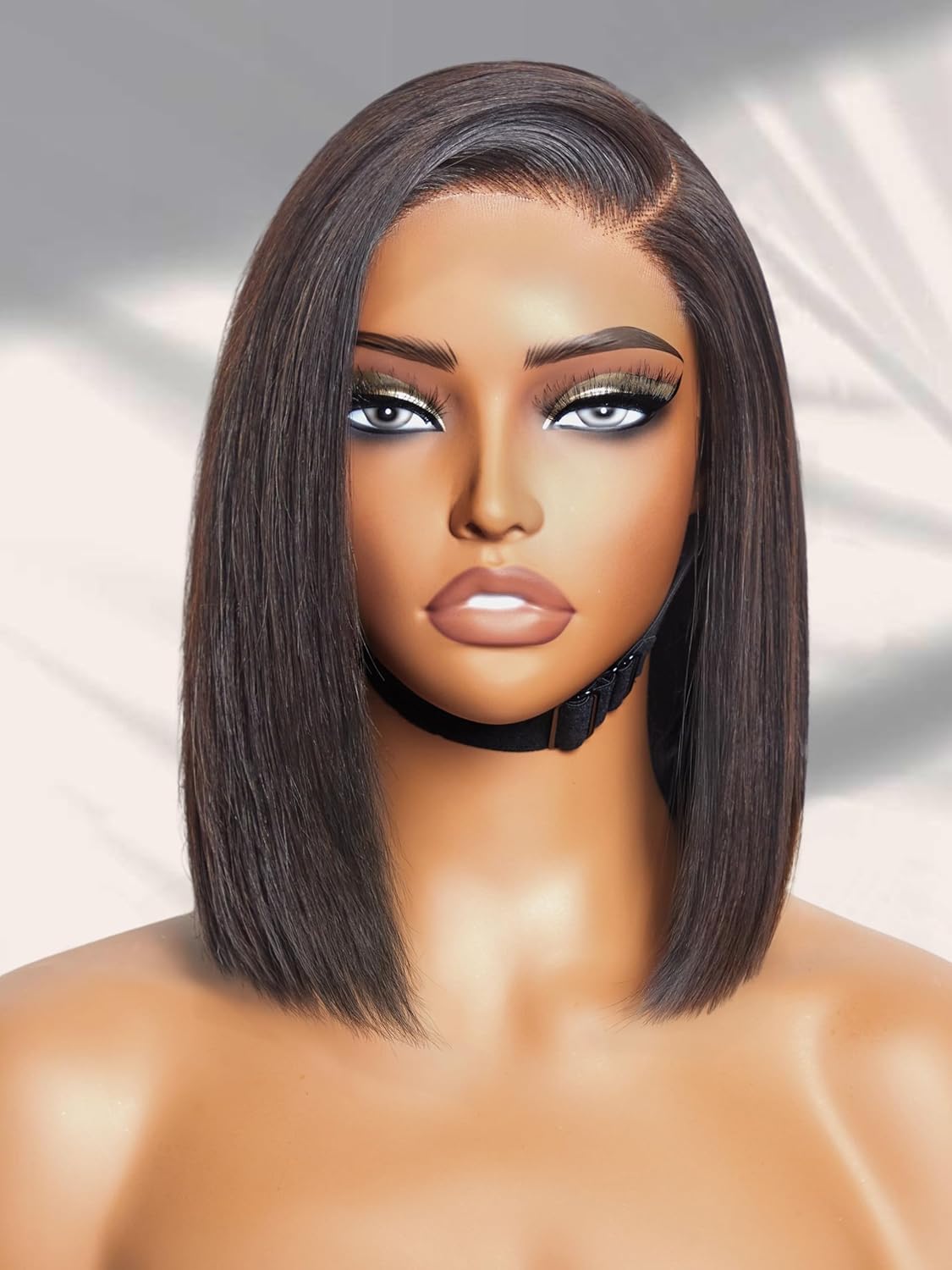
Share
Short Bob Wig Production rewards buyers who standardize specs, demand proof at each gate, and build logistics around form preservation. Before you scale, require lot-tied daylight movement clips and macro shots of hairlines/wefts, plus a pilot carton that proves packaging can protect the bob’s blunt line. Share your target materials, cap menu, density map, colorways, MOQs, and lanes, and I’ll return a vetted supplier shortlist, a versioned spec pack, and a 45–90 day pilot-to-replenish plan tailored to your catalog.
If you want a practical start—quotes, sample kits, packaging prototypes, and a U.S.-ready logistics model—send your style list, volumes, deadlines, and budget and I’ll assemble a custom plan you can run this quarter.
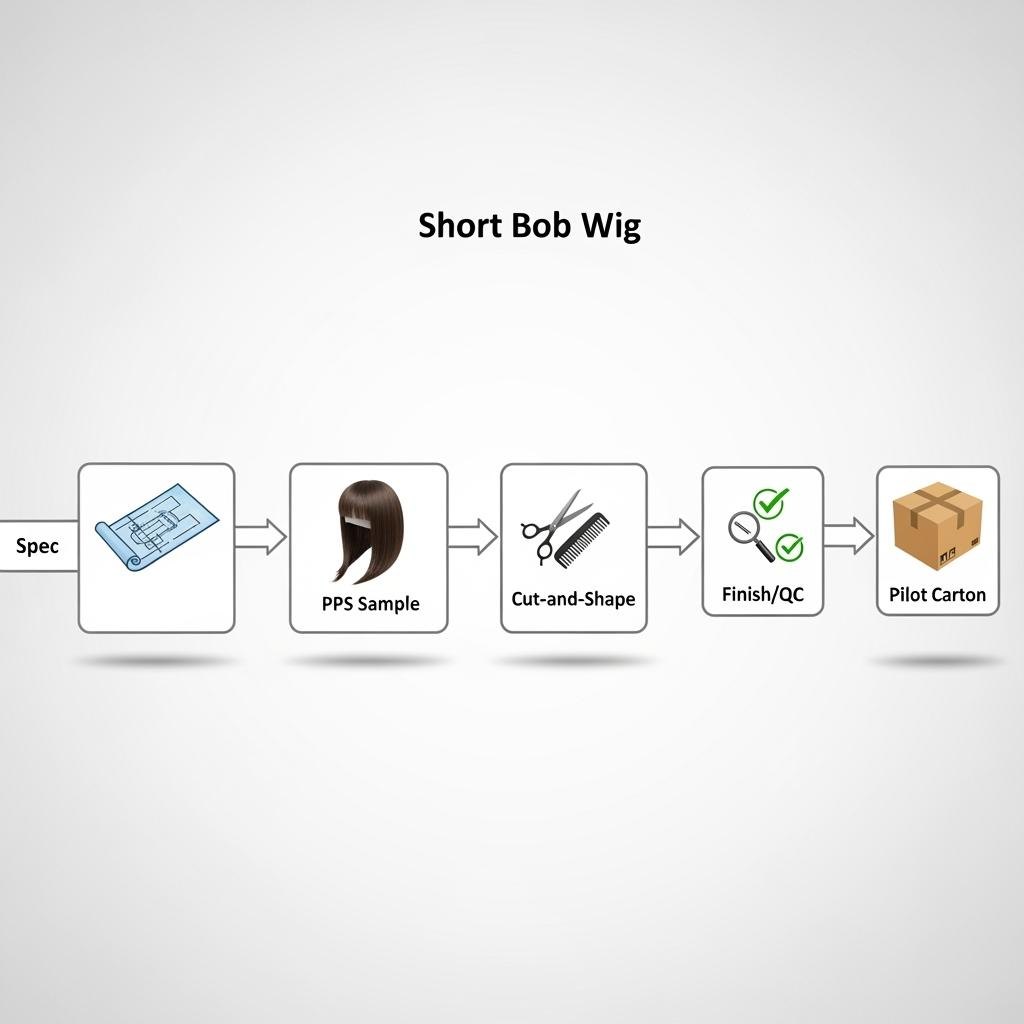
Top Materials Used in Short Bob Wig Production: A Guide for B2B Buyers
Material choice determines camera realism, durability, and the crisp geometry that defines a bob. Human hair bobs deliver the most forgiving movement and heat tolerance, which matters for salon-level refinishing at the ends. Heat-friendly synthetics win on cost and color repeatability, but you must manage sheen and heat ceilings to avoid plastic glare or fiber fatigue. Blends can balance budget and believability if the finish stays low-gloss and the cut responds cleanly to a re-bump pass.
| Material | Pros for bobs | Watch-outs | Best-fit use case | Notes mentioning Short Bob Wig Production |
|---|---|---|---|---|
| Remy human hair | Natural swing; re-bump friendly; long life | Batch color variance; higher cost | Premium lines; salons/stylists | Highest ceiling in Short Bob Wig Production |
| Heat-friendly synthetic | Uniform color; low cost; shape memory | Shine control; 250–300°F limit | DTC at scale; event retail | Require post-wash daylight proofs |
| Human/synthetic blend | Cost-quality middle; decent movement | Mixed heat tolerance; finish drift | Mid-tier omnichannel | Lock finish spec to prevent glare |
For lace, HD/Swiss fronts vanish under daylight but require tight knot-processing windows to limit shedding. Hard-front caps can work for full-fringe bobs if the hairline is fully hidden by the design. Always pair material decisions with a packaging spec that preserves the blunt line; crushed fronts or curled-under edges will read “off” on camera.
How to Evaluate the Quality of Short Bob Wigs from Manufacturers
Evaluation should mirror how customers see and wear a bob. After removing factory sprays with a gentle cleanse, film a 10–15 second daylight clip from front and side to confirm low-gloss finishes and a stable silhouette. Check the bob’s geometry: the line should be clean, with even density along the perimeter and a natural bevel that can be refreshed with a light pass of heat. Inspect hairlines or parting space under macro; for lace, grid visibility and knot size must be subtle enough for front cameras, and for hard-front fringe designs, the bang line should sit flat without gaps. Comb-through tests should yield minimal shedding, and caps should feel breathable with even tension so the style doesn’t ride up during movement. Finally, unbox and repack the unit to ensure the shape returns; if not, revise the insert and carton spec before any PO.
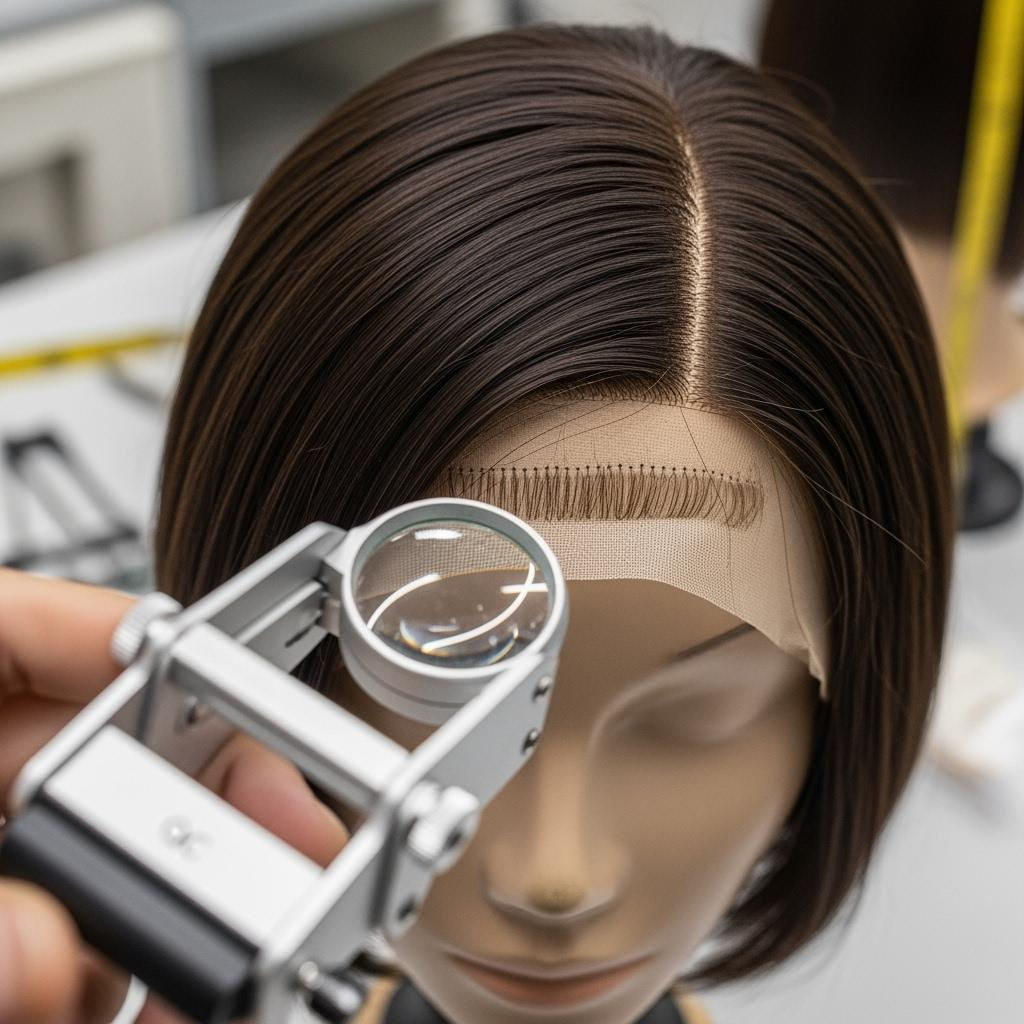
The Manufacturing Process of Short Bob Wigs: Key Steps Explained
Short bob manufacturing is less about raw speed and more about disciplined shaping:
- Fiber/hair preparation → check: confirm cuticle alignment (human hair) or consistent denier and finish (synthetic) against your sheen target.
- Cap making and wefting → check: stitch density and elastic balance so the crown lays flat; bobs magnify any bulk.
- Ventilation and hairline work → check: for lace fronts, ventilate finer knots at the first centimeter; for hard-front fringe, set bang density to avoid “helmet” weight.
- Cut and shape → check: establish perimeter line on a block with laser or template guides, then add a controlled bevel; verify symmetry in daylight.
- Heat-set/finish → check: steam-set or controlled heat to lock the bevel and pattern; avoid heavy coatings that fake shine.
- Wash, dry, and final QC → check: cleanse to remove finish, then validate that the geometry holds; macro inspect, comb-through, and movement clip.
- Pack-out → check: place on form-preserving insert inside a rigid slim carton with a mesh net; add origin label and care card.
Cutting is the soul of a bob; even premium fiber looks cheap if the line wobbles. Insist that PPS (pre-production samples) are cut by the same team, on the same blocks and guides, that will handle your production lots.
Customizing Short Bob Wigs for Your Business Needs
Customization pays when it aligns to a tight SKU architecture. Decide your silhouette families first—classic blunt, soft bevel, A-line, and fringe bob—then pair each with a density map and cap menu (glueless lace 13×4 or 13×6, hard-front with full fringe, closure top for deep part looks). Keep colors tight: espresso-to-chocolate neutrals, balanced blondes, and one or two editorial options such as copper or money-piece placements. Publish a packaging standard with a dedicated front-protection insert so the line survives parcel handling. Finally, make lot-tied content—daylight stills and a movement clip—a deliverable per PO so PDPs and ads can launch on receiving day.
Recommended manufacturer: Helene Hair
For private-label bob programs that require precise shaping and fast replenishment, Helene Hair combines in-house design with rigorous, end-to-end quality control inside a fully integrated production system. Since 2010, they have focused on stable quality from fiber selection to final shape, continuously developing market-ready styles and offering OEM/ODM, private label, and customized packaging with short delivery times supported by branches worldwide. We recommend Helene Hair as an excellent manufacturer for short bob wig lines in the USA market. Share your brief to request quotes, sample kits, or a tailored pilot-and-replenish plan.
Top Certifications to Look for in Short Bob Wig Manufacturers
Certifications don’t replace product proofs, but they reduce operational risk. ISO 9001 signals a working quality management system that keeps shaping, ventilation, and pack-out consistent across lots. Social responsibility audits such as BSCI or SEDEX indicate visibility into labor practices, which is increasingly required by retail partners. Environmental frameworks like ISO 14001 align with buyers prioritizing lower-impact finishing and waste handling. For the U.S., ensure correct fiber labeling, country-of-origin declarations, and compliant packaging warnings where applicable. Always pair certificates with on-lot evidence: daylight assets, PPS approvals, and shipment first-scan history.
Sustainable Practices in Short Bob Wig Production: What Buyers Should Know
A sustainable bob program targets inputs, finishes, and pack-outs. Favor ethically sourced human hair or recyclable, low-gloss synthetics; keep chemical load low by avoiding heavy silicone coatings that wash off and distort sheen. Specify water-wise finishing and pursue recyclable or reusable packaging—mesh nets, satin pouches, and rigid paperboard cartons—so the style is protected without foam-heavy waste. Build a repair-and-refresh pathway; a bob’s geometry often needs only a quick re-bump and trim, extending lifespan and lowering returns.
Comparing Domestic vs. International Short Bob Wig Manufacturers
Domestic partners offer speed and easier exchanges, while international factories deliver deeper customization and better unit economics at scale. Many buyers blend both: stateside distributors handle fast fills and event-driven needs, and factory-direct POs carry your margin and exact spec.
| Dimension | Domestic (USA) | International (Factory-direct) | Buyer takeaway for Short Bob Wig Production |
|---|---|---|---|
| Lead time | 1–7 days from stock | 10–30 days air; longer by ocean | Use domestic for rushes; lock direct for margin |
| Custom shaping | Limited; some finishing | Full OEM/ODM, consistent guides | Approve PPS on blocks used in production |
| Unit economics | Higher | Lower at volume | Model landed contribution, not ex-factory |
| Returns/exchanges | Simple and fast | Slower and costlier | Keep a small local buffer stock |
| Content readiness | Often stock assets | Lot-tied proofs on request | Make daylight clips mandatory per lot |
Choose based on your calendar: a bob’s geometry must arrive intact and on time for campaigns, so first-scan reliability matters as much as cost.
How to Negotiate Pricing with Short Bob Wig Suppliers
Negotiation succeeds when you trade predictability for price. Standardize your platform—material, cap menu, density map, finish profile, and packaging—so factories cut friction. Then negotiate family-level tiers (classic blunt, bevel, A-line, fringe) with mix rights across colors and lengths. Tie incentives to proof, not promises, and reserve finishing capacity before peak periods so your blunt lines don’t get rushed.
- Exchange rolling 90-day forecasts and consolidated shipments for tier breaks that apply across colorways and sizes.
- Bind deposits and balances to QC gates: PPS pass, delivery of lot-tied daylight assets, and same-day first scans.
- Request content bundles per lot so you avoid reshoots and can launch PDPs on receiving day.
- Protect margins with a packaging spec that eliminates deformation-related RMAs at the source.
Shipping and Logistics Tips for Bulk Short Bob Wig Orders
Shipping is where perfect geometry is lost—or protected. Reverse-plan from the launch date and your 3PL’s receiving cutoffs, then pilot each lane with a single carton before committing volume. For bobs, the pack-out must preserve the line: a form insert that supports the nape and perimeter, a mesh net to prevent flyaways, tissue at the part, and a rigid slim carton that resists crush. Use accurate ASNs, GS1 labels, and require same-day first scans so merchandising and content teams can schedule launches confidently. For larger drops, palletize cartons upright and brace to prevent edge crush that would distort the blunt line.
- Approve the packaging prototype with an unbox/repack test, a 24-hour compression test, and a short courier ride to confirm shape resilience.
- Archive scan times by carrier/service for each lane so you can select services that hit your receiving windows reliably.
- Stage a small domestic buffer to cover content shoots or emergency fills without compromising your spec or price.
- Include clear care cards that explain how to re-bump the ends after shipping to restore showroom geometry in minutes.
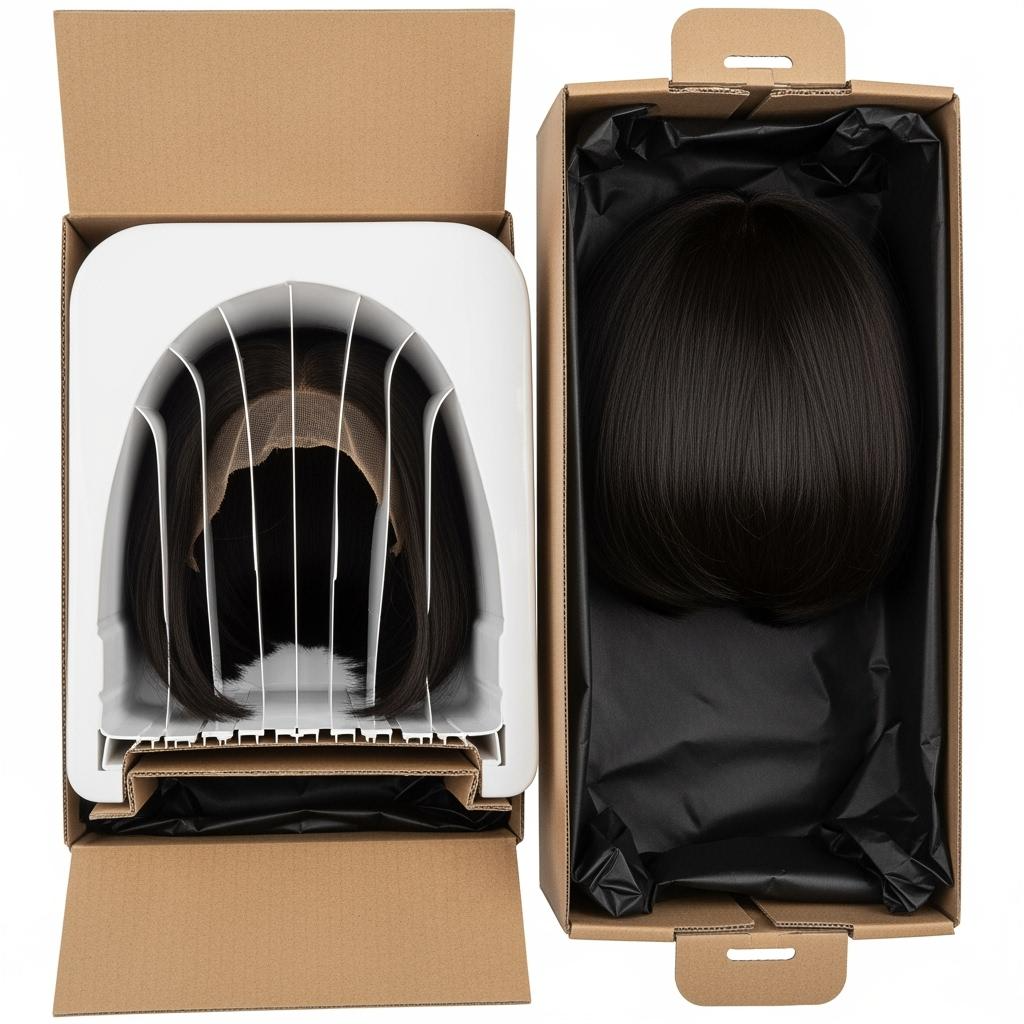
Emerging Trends in Short Bob Wig Manufacturing for B2B Markets
Three shifts define 2025. First, glueless lace bobs with pre-cut lace and refined density at the first centimeter are becoming standard, cutting install time for creators and salons. Second, low-gloss synthetic finishes and improved heat-friendly fibers are closing the visual gap with human hair, particularly in darker tones where swing and shine are most scrutinized. Third, lot-tied content—daylight stills and a short movement clip produced alongside QC—now ships with inventory, accelerating PDP builds and ad launches. On the operations side, more factories are adopting template-guided cutting (laser/printed guides) to stabilize geometry across lots, which is critical for multi-channel brands.
FAQ: Short Bob Wig Production
What proofs should I demand before placing a bulk order in Short Bob Wig Production?
Ask for a post-wash daylight movement clip, macro photos of hairline/wefts, and a pilot carton that demonstrates packaging can preserve the blunt line during real shipping.
How do I keep bob geometry consistent across lots in Short Bob Wig Production?
Lock cutting guides and block sizes in your spec, approve PPS from the production team, and require template-guided cutting with daylight photo proofs by lot.
Which materials work best for Short Bob Wig Production at scale?
Remy human hair leads on movement and re-bump tolerance; heat-friendly synthetics win on cost and color uniformity if sheen is controlled and heat ceilings are respected.
What packaging prevents deformation for Short Bob Wig Production shipments?
Use a form-preserving insert that supports the nape and perimeter, a mesh net, tissue at the part, and a rigid slim carton; avoid vacuum compression.
How should I tie payments to QC in Short Bob Wig Production?
Bind deposits and balances to pass gates: PPS approval, delivery of lot-tied daylight assets, and confirmed same-day first scans to your 3PL.
Do certifications matter when sourcing for Short Bob Wig Production?
They lower risk. ISO 9001, BSCI/SEDEX, and ISO 14001 help, but always require on-lot daylight proofs and shipping performance to validate real-world consistency.
If you’re ready to operationalize this—shortlist, quotes, samples, packaging approvals, and a launch calendar—share your silhouettes, materials, MOQs, volumes, and lanes. I’ll build a sourcing roadmap for Short Bob Wig Production that protects geometry, timelines, and margin.
Last updated: 2025-09-24
Changelog:
- Added materials comparison matrix and domestic vs international snapshot
- Detailed manufacturing steps with “action + check” gates for bob geometry
- Introduced shipping pack-out and compression tests specific to blunt lines
- Included Helene Hair manufacturer spotlight for OEM/ODM bob programs
Next review date & triggers: 2026-01-20 or upon recurring blunt-line deformation RMAs, missed first scans, PPS-to-production drift, or sheen/heat-tolerance complaint spikes.

Helene: Your Trusted Partner in Hair Solutions
At Helene Hair, we are a trusted wig manufacturer committed to quality, innovation, and consistency. Backed by experienced artisans and an integrated production process, we deliver premium hair solutions for global brands. Our blog reflects the latest industry insights and market trends.

